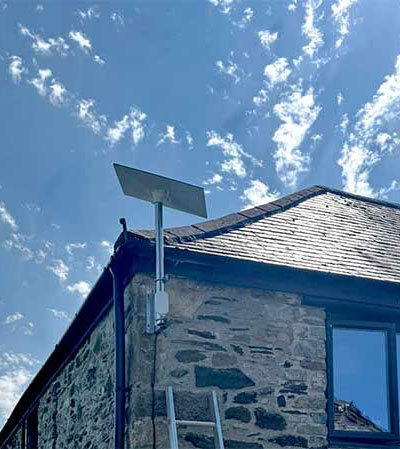Portable Internet Networking & connectivity
If you have power and a Starlink kit, you can be connected—anywhere, anytime.

What is Starlink and How Does Satellite Internet Service Work?
Starlink is a satellite-based internet service developed by SpaceX with the goal of providing high-speed, low-latency internet to areas where traditional broadband—like fiber, DSL, or cable—is unavailable, unreliable, or too expensive to install.
Instead of relying on underground cables or cell towers, Starlink uses a constellation of small satellites in low Earth orbit (LEO) to beam internet data directly to a dish antenna at your location.

Starlink Residential Speeds
Official Guidance
Download: Starlink advertises typical residential download speeds of 50–150 Mbps, with some users averaging ~90 Mbps in early 2022
.Upload: Not explicitly advertised for residential, but comparable business tiers offer higher speeds—more on uploads from real-world tests below.
You can use a few enticing words and flaunt your capabilities that will attract future clients and encourage them to hire you right away.
Real-World User Experiences
One user averaged ~95.7 Mbps download and ~9.6 Mbps upload in central Minnesota—with speed spikes reaching 306 Mbps down / 42 Mbps up occasionally
- Network congestion: Speeds drop as more users join a satellite “cell”
- Environmental conditions: Trees, weather, and obstruction affect performance
- App vs. external speedtests: Starlink’s internal tests often underreport compared to independent tools
How Starlink Works – Step by Step
Low Earth Orbit Satellites
Starlink satellites orbit about 550 km above the Earth (much lower than traditional geostationary satellites at ~35,000 km). Being closer means faster data transmission and lower latency (often 20–50 ms, similar to ground-based broadband).
Ground Stations (Gateways)
Located on Earth, these are connected to high-capacity fiber networks. Satellites act as “space relays” between your dish and the nearest gateway. Newer satellites also use laser interlinks to pass data between satellites without a ground hop, enabling service even in remote oceans or polar regions.
Your Starlink Kit
Dish Antenna ("Dishy"): Tracks satellites automatically as they move overhead. Wi-Fi Router: Distributes the internet signal to your devices. Power Supply & Cables: Connect everything together.
Advantages
Works in rural, remote, and mobile locations (RVs, ships, planes). Low latency compared to older satellite systems. Easy to install yourself—no technician needed in most cases. Service is portable with certain Starlink plans.
Data Transmission
When you browse a website or stream a video, your request goes: Your device → Wi-Fi Router → Dish → Nearest Starlink Satellite → SpaceX Ground Station → The Internet The return signal follows the same path in reverse.
Limitations
Requires clear view of the sky (trees/buildings can block signal). Service quality can vary depending on network congestion and satellite visibility. Hardware and monthly costs are higher than some wired options. Still expanding coverage—some remote areas may have waitlists.
If you like, I can also make a simple diagram showing exactly how Starlink data travels between your device, the satellite, and the internet. That would make the process crystal clear.
Starlink – Connection Anywhere, Anytime
Starlink is designed to give you fast, reliable internet no matter where you are—whether that’s in a remote mountain cabin, on a moving RV, at sea, or even in the middle of the desert.
Global Satellite Network
Starlink uses thousands of low Earth orbit (LEO) satellites that circle the planet, constantly passing overhead.
These satellites create a mesh network that covers nearly every populated area—and even many unpopulated ones.

Portable Hardware
The Starlink Dish (“Dishy”) automatically aligns with satellites as they move.
With certain plans like Roam, you can pack up your dish and take it anywhere—plug it in, and you’re online in minutes.
Multiple Service Plans for Different Lifestyles
Residential – Fixed location, high-speed home internet.
Roam – Portable, for RVs, travelers, and remote work.
Maritime – For ships and yachts.
Aviation – For planes in flight.
Low-Latency Communication
Because satellites are in low Earth orbit (~550 km) instead of far away geostationary orbit, latency is low (20–50 ms), making video calls, streaming, and even online gaming possible.

Truly Remote Access
Starlink doesn’t need cell towers or wired infrastructure—just a clear view of the sky.
This makes it ideal for:
Rural homes
Disaster recovery areas
Expeditions and research outposts
Traveling vehicles and vessels
If you want, I can make you a one-page visual flyer for “Starline – Connection Anywhere, Anytime” that explains this in a clean, marketing-ready style. That would make it perfect for presentations or brochures.